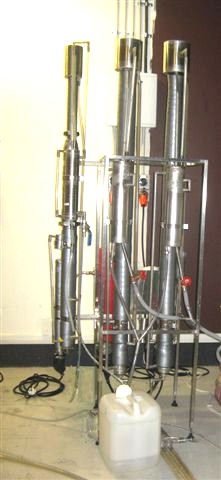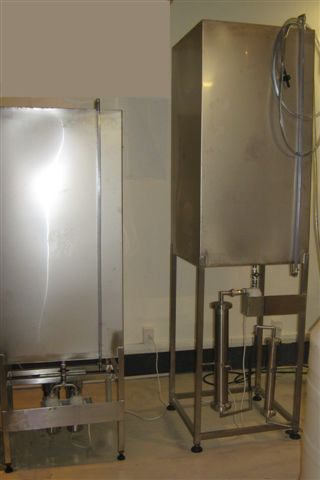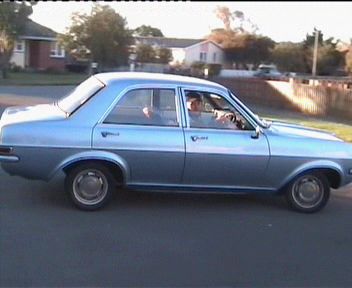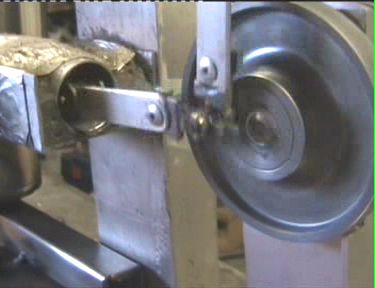|
|
|
|
Waste motor oil reformer.
|
The test run of new continuous oil distiller. |
How to make diesel fuel |
|
Latest version of the continuous used automotive oil reformer. Every day we can hear about all sorts of crises happening around the world, conflicts, financial collapses, logistic problems, and all kinds of shortages. Sometimes the question is not about the fuel cost at the pump but about any fuel availability. Thus, a small waste oil processing unit can partially solve the problem. The continuous reformer combines two systems - the continuous waste automotive oil distiller and waste motor oil reformer. I tried to simplify the construction of the reformer and make it a genuinely continuous operation machine. I added an electronic control unit that helps keep the distillation's constant predetermined temperature depending on the processing oil type. The "used oil" distiller is a high-temperature device that processes used motor or automatic transmission oils or liquid hydrocarbons at high temperatures. The machine is relatively safe compared to giant monsters where people are trying to boil gallons and gallons of motor oil at once - and no one wants to be next to an extremely hot system filled with hundreds of liters of overheated oil. During distillation, the processing oil is stored in a separate container, and processing oil is continuously pumped into the reactor of the distiller. Simultaneously, the resulting fuel and waste can be evacuated from the distiller into the containers via the pipes. The continuous distiller design eliminates overpressure - the reactor has a bypass. As a result, all the reactions happen at atmospheric pressure, while no oxygen can get into the system. The production rate of the distiller is up to 24L per hour of diesel fraction, which must be treated prior to further use. To visit continuous reformer plans page - press the "Visit Page" link below. Visit Page |
|
First version of the waste motor oil reformer.
Here is another impression of the oil industry's widely used secondary crude oil distillation system or high-temperature reformer (cocking machine). This equipment usually applies to processing crude oil remains left after the main straight run of the crude oil and all light fractions were removed. And the only heavy oil without any light fractions was left behind. Thus, to create new fractions within the secondary crude oil, the substance is exposed to extreme heating conditions. High temperature causes the oil molecules to burst and crack into the smaller hydrocarbon chains creating new hydrocarbon fractions from coke to diesel and petrol distillates. Not every one of us has access to natural crude oil. Still, everyone can get waste automotive or hydraulic oils. In fact, by comparison with the secondary crude, the used automotive oil is a much better choice because the waste oil was already treated once at the refinery. It was made free of sulfur and other harmful components; thus, you are technically dealing with the crude prepared for automotive use. What does it mean? - it means that the fuel obtained by processing the WMO is technically neutral and can be treated and cleaned without using potentially dangerous methods involving some chemicals that can be dangerous for the back-yard researcher and environment.
At first, it was an idea about the waste cooking oil processing into biofuel. But a simple comparison of operations and chemicals involved in two separate processes of diesel production using the reformer and veggie oil processor led to another idea. Thus, for bio-diesel production, one will need to clean the oil first, then settle it in a reactor with strong alkali and methanol (both are dangerous and toxic). Then after conversion, you'll need to separate the glycerol and the fuel. You'll need to wash the fuel using some water and dry it after all, and despite all of this, your fuel will be a short-living substance that was not designed for any long-time storage, plus it can turn solid at temperatures close to the 0c. The cooking oil conversion is not convenient - too many operations, harmful chemicals, and unreliable at colder temperatures. (plus a used cooking oil is not free anymore).
Now let's see what automotive waste oil processing
would involve and what results can be obtained. The oil should be free of water.
Also better to have it filtered - just like veggie oil, then you run it through
a reformer and settle it in an airtight container for three days to allow the
bitumen to separate and deposit on the bottom of the container. As you can see, the processing of the waste automotive (mineral and synthetic) oils can be friendlier than the production of the biofuel, which requires harmful and expensive chemicals, water washing, and drying. Here is the small piece of equipment capable of producing enough for personal use, running your diesel gen-set agricultural machinery or diesel car. To buy reformer plans - press the "Buy Now" link below. Or visit download area. Buy Now
|
© 2009-2023 Ferromit.com. All rights reserved.



